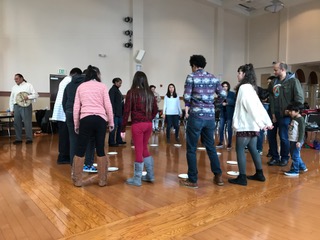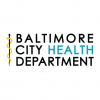Baltimore City Recognizes National Native HIV/AIDS Awareness Day
Monday Mar 20th, 2017

by Tiffanie Sherrer
On Saturday, March 18, 2017, the Baltimore City Health Department (BCHD) and Baltimore City HIV Planning Group and Commission partnered with Native American LifeLines in celebrating National Native HIV/AIDS Awareness Day by hosting the 3rd Annual Round Dance and Community Health Fair.
This was the 10 year anniversary of this nationwide observance.
This year’s event was held at Helping Up Mission with more than 100 participants, including guest speaker Dr. Patrick Chaulk, BCHD’s Assistant Commissioner for HIV/STD Services. BCHD provided free HIV and STI testing and counseling to 45 people onsite at the event. Additionally, nearly 50 individuals received naloxone training to reverse an opioid overdose. Other resources were available for smoking cessation, veterans, and those eligible for Medicaid.
BCHD has cultivated a partnership with Baltimore’s American Indian community over the years and has taken the leadership in improving data collection practices for American Indian and American Native individuals living with HIV and AIDS. Three years ago, BCHD amended its intake forms at city clinics to identify American Indian and American Native populations.
This simple inclusion is crucial to the American Indian/American Native population in order to have a better understanding of the impact of HIV/AIDS in their community. The goal is to make this data collection practice a model for other data collection entities, in both the state and the country.
“As we rely on numbers for funding, the practice of ‘othering’ really hurts our ability to demonstrate the need that we know exists. It’s a dehumanizing thing to be statistically ‘othered,’” said Kerry Hawk Lessard, CEO of Native American LifeLines-Baltimore.” “I think it is hugely important that BCHD made this happen and we are inexplicably grateful.”
“National Native HIV/AIDS Awareness Day is an important event and Native American LifeLines is critical in spreading the word about HIV Awareness in the American Indian/Alaska Native community because ours is a very hidden population,” Ms. Hawk Lessard continued. “It’s good for people to know that American Indian/American Native families live amongst the community at large and that people are aware of the issues that we face.”
